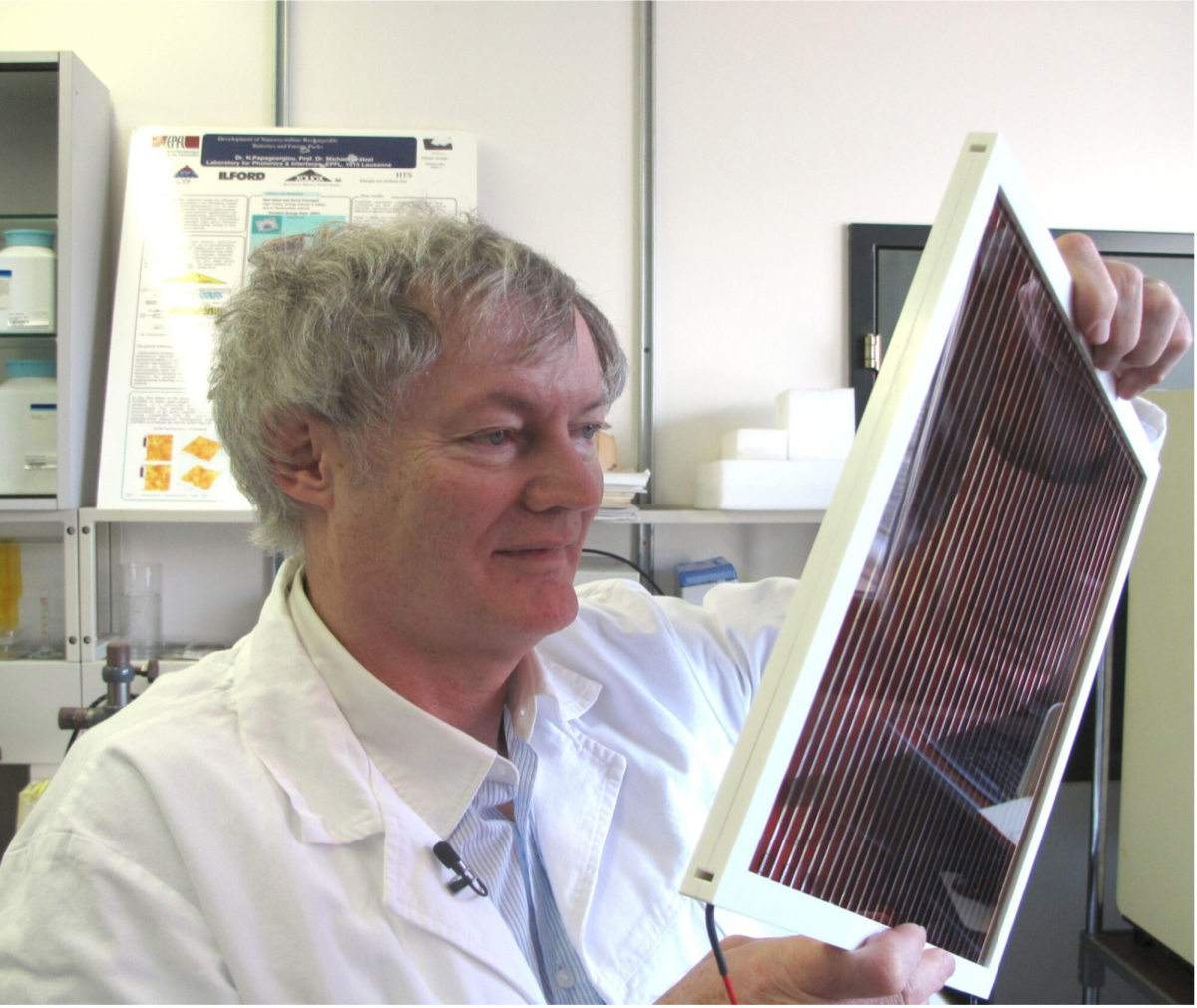Professor Michael Grätzal presents his research to Wake Forest students on photovoltaic cells
By: Beza Zelalem, contributing writer for the Old Gold & Black
Let’s be honest. How knowledgeable are you on photovoltaic cells and their importance? If your answer is “not very knowledgeable,” don’t worry because world-renowned professor Michael Grätzal held a lecture on Oct. 19 at Wake Forest on how photovoltaic cells help generate electricity through fuel from sunlight.
Grӓtzel has dedicated the majority of his academic research career to understanding the use of mesoscopic photosystems for solar light harvesting. In his work, he is searching for a renewable yet efficient alternative to conventional p-n junction photovoltaics that also mimics the light reaction in photosynthesis.
Understanding these big, scientific words can be intimidating at first glance, so breaking them down into simple terms is important.
A “photosystem” is a functional unit used to harvest light and convert energy. In plants, photosystems are made up of a combination of proteins and pigments responsible for collecting electrons from light and transforming them into useful chemical energy. The term “mesoscopic” describes the size of anything measured between nanometers and micrometers. Therefore, a mesoscopic photosystem is a minimal unit that possesses the ability to take light energy and turn it into useful energy.
Mesoscopic photosystems directly relate to the workings of the solar harvesting system, which uses these photosystems to efficiently harvest energy from a light source and mimic the metabolic pathways of plants seen every day.
According to the Energy Information Administration, photovoltaic cells — commonly known as solar cells — are non-mechanical devices that convert sunlight directly into electricity. More practically, they are often installed as solar panels to carry out this conversion.
The majority of photovoltaic cells seen in solar panels today are created using p-n junction technology. A p-n junction device has two types of semiconductor materials that allow electrons to flow in one direction. P-n junction photovoltaic cells use photons to activate the conduction of electron flow. This is the technology on which Grӓtzel is trying to improve with his invention of dye-sensitized solar cells.
Why should you care about photovoltaics in the grand scheme of things?
On April 20, 2010, The Deepwater Horizon in the Gulf of Mexico exploded, killing 11 people and causing an unprecedented ecological disaster by spilling at least one billion liters of oil into the ocean. The National Oceanic and Atmospheric Association (NOAA) assessed the injuries to natural resources such as fish, nearshore ecosystems and sea turtles and declared it the “largest natural resource damage assessment ever undertaken.”
Following the devastation of the Deepwater Horizon oil spill, Grӓtzal doubled down on his photovoltaic research — motivated to discover a new generation of solar cells to contribute to the development of clean and renewable energy sources to mitigate the effects of climate change.
The goal? To grow the power of photovoltaic cells 200 times in the next 50 years to meet the Paris Climate Agreement. The problem is that, with the rate of disasters increasing and temperatures rising, the target of limiting global warming is incredibly far from being achieved.

In the Journal of Renewable and Sustainable Energy, Pierre Verlinden describes a model to predict what is necessary for the solar industry to meet Paris Agreement targets.
“Our planet is on the path of an average temperature increase of 4 degrees Celsius before the end of this century, concerning the average Earth temperature before the industrial age, and the result will be catastrophic,” wrote Verlinden.
Fossil fuel energy sources largely contribute to the ongoing climate crisis. Solar power helps reduce the amount of carbon dioxide and other greenhouse gasses released into the atmosphere, ergo mitigating climate change.
This is where the importance of alternative energy sources like solar cells comes in. Grӓtzal invented the dye-sensitized solar cell, also known as the “Grӓtzal cell,” to help avoid the energy crisis by harnessing the power of the sun. This cell uses a combination of titanium dioxide and organic dyes to convert sunlight into electricity, providing a more environmentally friendly alternative. This process closely mimics the naturally occurring mesoscopic photosystems that are seen in plants.
Unlike conventional silicon solar cells, the cost of production for dye-sensitized solar cells is low because the dye used is extracted from the pigment of plant parts.
“[These cells] have unique practical advantages including their flexibility, aesthetic appeal and transparency,” Grӓtzal stated during his lecture. “Their [practicality] has allowed for the commercial application of the prototype.”
Leaders across the globe have been urged to raise carbon-cutting ambition and follow through on implementation. With this implementation, solar cells may provide more than half of the projected increase in global power capacity by 2026. To meet this goal and decrease the rate of disasters, energy consumption must shift to being 100% renewable, using solar and other clean energy sources.
This article was originally published in the Old Gold & Black Environment section.
